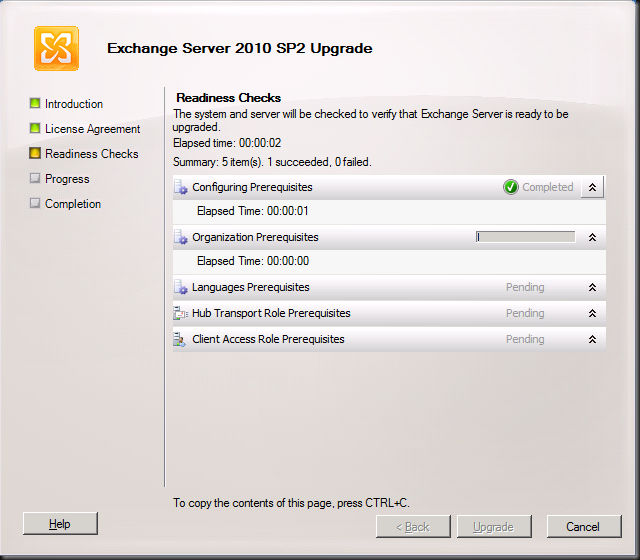

- EXCHANGE 2010 SP2 INSTALL
- EXCHANGE 2010 SP2 UPDATE
- EXCHANGE 2010 SP2 UPGRADE
- EXCHANGE 2010 SP2 LICENSE
- EXCHANGE 2010 SP2 DOWNLOAD
EXCHANGE 2010 SP2 UPDATE
Click FinishĪlthough the wizard didn't ask for a reboot, I prefer after installing any major update to reboot the machine.
EXCHANGE 2010 SP2 UPGRADE
EXCHANGE 2010 SP2 LICENSE
Accept the license terms and then click Next.
EXCHANGE 2010 SP2 INSTALL

Open the Directory where you have extracted SP2, and then double click on setup.exe.You will be notified when extraction is completed. You will be asked where you want to extract the installation files, select a directory and then click on OK.
EXCHANGE 2010 SP2 DOWNLOAD

Well guess what? Exchange 2010 SP2 does exactly that. I’ve often wondered why the MRSProxy wasn’t enabled by default but guess this has to do with the relatively few cross-forest migrations that occur compared (at least compared to Exchange 2010 upgrades).īut now that Office 365 is here, it makes even more sense to enable it or at least make it easier to enable and disable it. In the bottom of this file, you needed to change IsEnabled=”false”to IsEnabled=”true” then save the file and restart the Exchange MRS service. And if you needed to enable it, you had to do so via the EWS “ web.config” file located under “ C:\Program Files\Exchange Server\V14\Client Access\exchweb\ews”. So up until Exchange 2010 SP2, the MRSProxy was disabled by default. If an organization decides to move to Exchange Online in Office 365 and the organization uses the rich coexistence scenario, they also use the MRSProxy, which means that its required to deploy at least one Exchange 2010 CAS server in the on-premise organization. The MRSProxy makes mailbox move requests more seamless because it, among other things, encapsulates all communication between the organizations in HTTPS packets (read more details in the Exchange 2010 documentation on TechNet). Its often used when performing a cross-forest migration from a legacy Exchange organization (containing at least one Exchange 2010 CAS server as the MRSProxy must be enabled in the source organization) to an Exchange 2010 organization. So as some of you know, the MRSProxy service helps facilitate cross-forest mailbox move requests. Although it’s a minor one, it’s worth mentioning another change introduced by Exchange 2010 SP2 this time revolving around the Mailbox Replication Proxy Service (aka MRSProxy service).


 0 kommentar(er)
0 kommentar(er)
